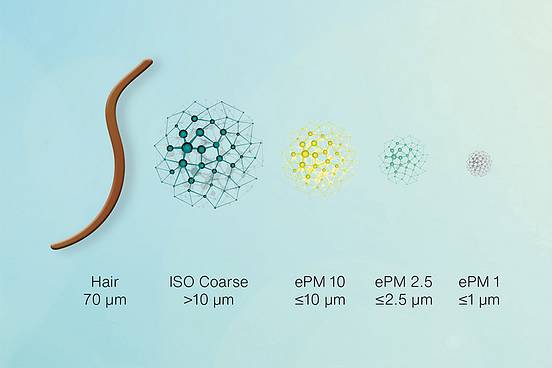Occupational disease can be hard to detect, because it may at first seem like allergies or a common cold. However, misdiagnosing an industrial disease can make health issues even worse over time. This article will help you identify the symptoms, causes, and consequences of industrial disease, and show you how to prevent it in the first place.

"Occupational disease" is an umbrella term for any illness that a person contracts at work. These diseases often involve the lungs, and can be traced back to a singular problem found in many industries: dust particles.
Early symptoms of an industrial disease are incredibly hard to spot, because they may be as minor as a dry and persistent cough. It's easy to write off these symptoms, thinking they will pass on their own.
However, ignoring these symptoms means the issue will go undiagnosed. This could have serious consequences for your staff, and consequently, your entire business.
To keep your workforce healthy and productive, be on the lookout for these common industrial diseases.
Protecting our lungs is essential, because our ability to breathe well seriously impacts our quality of life. Fine dust is one of the greatest threats to our lung health; breathing it in over time can lead to conditions such as asthma, chronic obstructive pulmonary disease (COPD), or allergic reactions.
There are other serious lung issues that dust inhalation causes:
Though asbestos has been banned in the US for decades, the long-term effects from its use in the past are still felt today. Keep that in mind the next time someone says that dust is a minor problem.

Dust particles come in all shapes and sizes, but the tiny ones, known as PM1, are particularly dangerous because of how long they remain in the air. In an enclosed room, PM1 can float for three days before they settle.
Dust that remains in the air is much easier to breathe, and what's worse, these fine particles can penetrate deep into the body, entering the bloodstream and even damaging vital organs.
To put it succinctly:
Smaller particles stay in the air longer, are easier to breathe, and can cause serious damage.
Our skin is our body's armor, protecting us from harm. However, that doesn't make it immune from an industrial disease like contact dermatitis.
This health issue is caused when irritants and allergens come into contact with the skin. In industrial settings, these irritants can arise from cement, resins, or metals like nickel and chrome.
Latex is also a known cause of allergic dermatitis, and it can become chronic after prolonged contact. If the staff at your business wear disposable gloves at work, they're at risk of contracting this painful skin issue.
Bear in mind that there are natural causes for skin diseases, such as excessive moisture.
Eczema, sunburn, and skin cancer: Each one of these is an occupational disease that affects the skin. They can come about either from an unsafe working environment and/or poor safety education practices among staff. Either way, such conditions are common, particularly in facilities where welding takes place. There's even a term for it: "Welder's tie" is what occurs when welders get a sunburn between their overalls and the masks they wear for protection.
It may seem like a normal hazard of the job, but if it's common enough to get its own terminology, its an issue worth taking seriously.
Are toxins and chemicals in the air you breathe at work? If so, you might soon experience symptoms of a neurological occupational disease. Though these may be less common than an industrial disease like asthma, the risks posed by chemical fumes, pesticides, and other toxins should not be underestimated.
Symptoms of this kind of occupational disease range from numbness and headaches to fatigue and light-headedness. In the worst cases, toxins can cause brain damage.
Some chemicals may cause indirect health issues by preventing the brain from obtaining normal oxygen levels. If this problem persists, individuals may experience migraines or even impaired motor skills.
Carpal tunnel syndrome (CTS) is caused by the repetitive motion of the hands – and because of the nature of some jobs, it's an issue many people will encounter.
CTS is even more common for employees who use vibrating tools or otherwise work in ways that put pressure on their hands. Symptoms of CTS include:
Eventually, the pain may radiate up the entire arm, causing one to lose their grip strength. In the worst cases, CTS causes the thumb muscles to degrade.
Though occupational diseases are incredibly common, they're also preventable with the right protective measures. Educating your employees about these health hazards and encouraging them to make regular doctor visits will prevent the misdiagnoses of serious illnesses.
But these measures aren't enough on their own. You need a solution that will solve the problem long-term, and make industrial disease a thing of the past. The best way to do this is with an industrial air purifier that can eliminate fine particles before they can be inhaled.
The result?
With clean air, you can reduce sick leave at your company by 50%, and protect your staff now and into the future. Get in touch with Zehnder Clean Air Solutions to find out more.